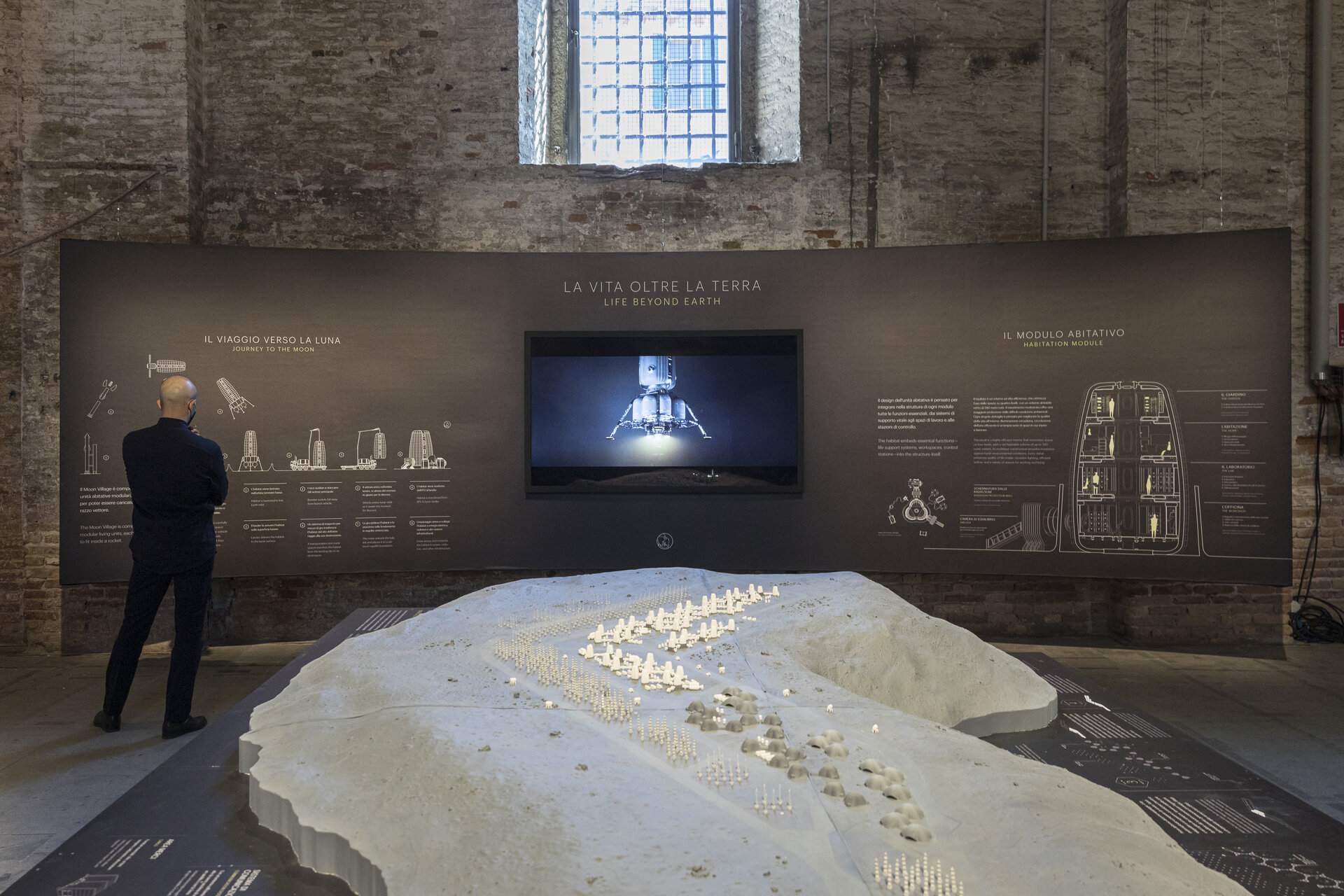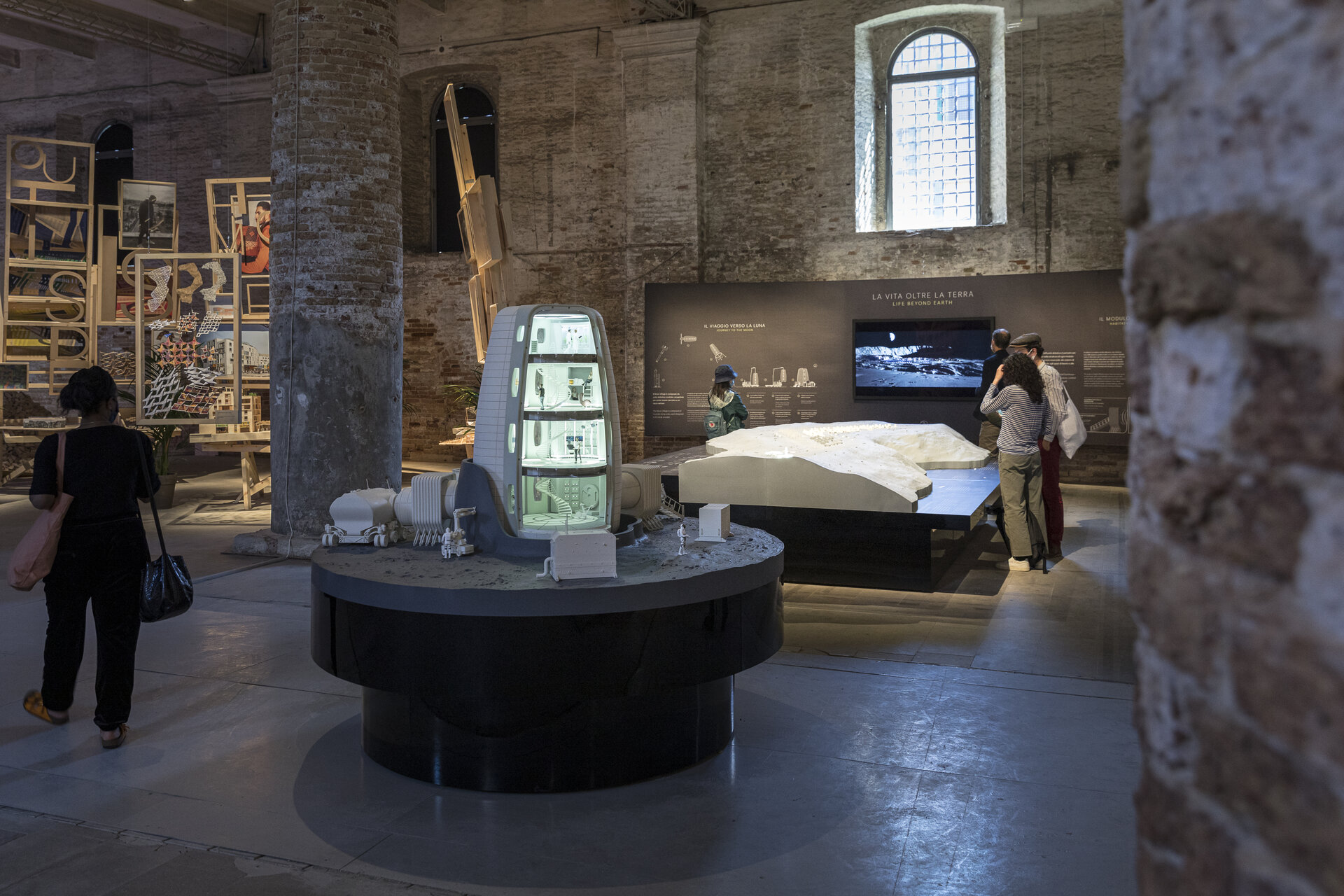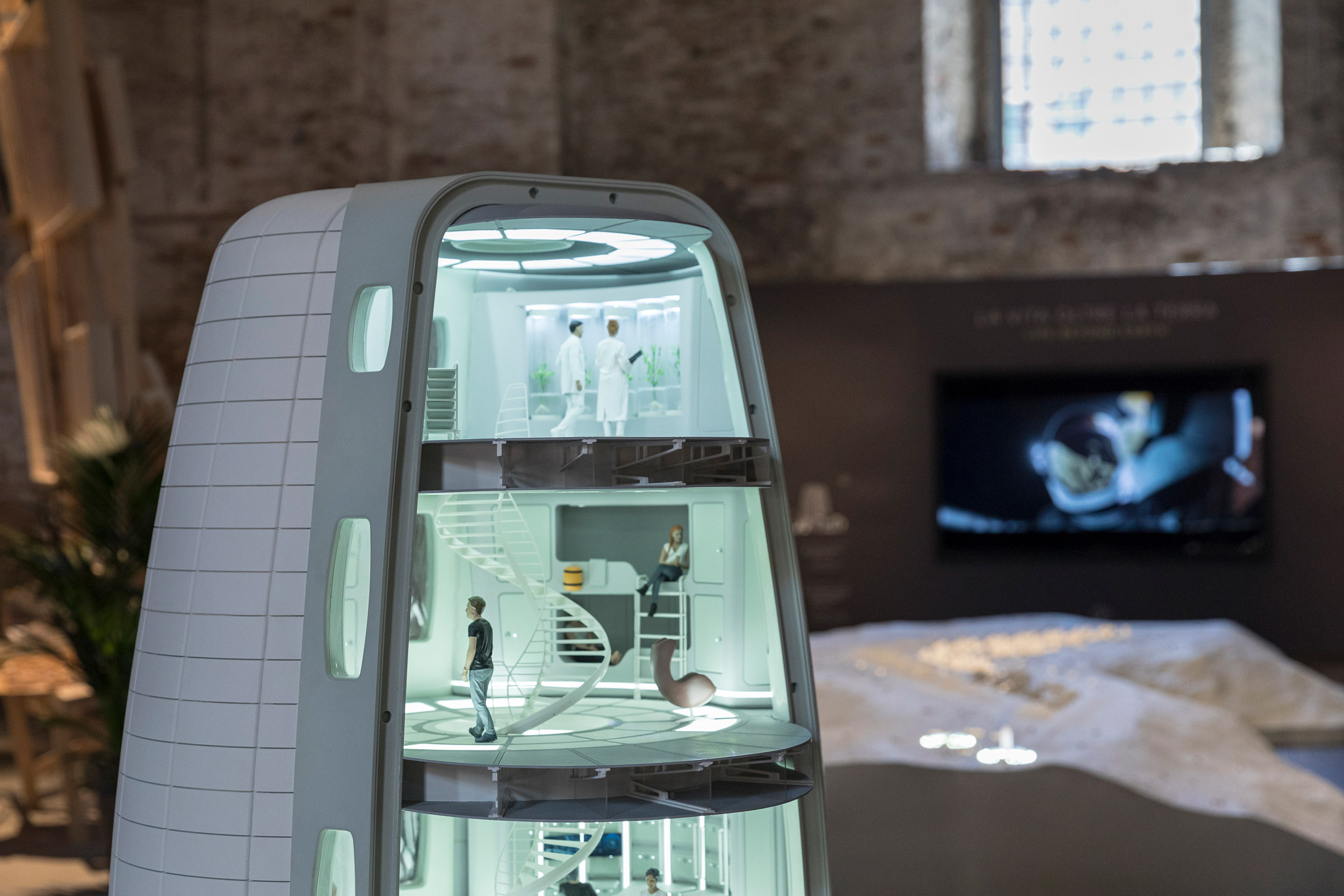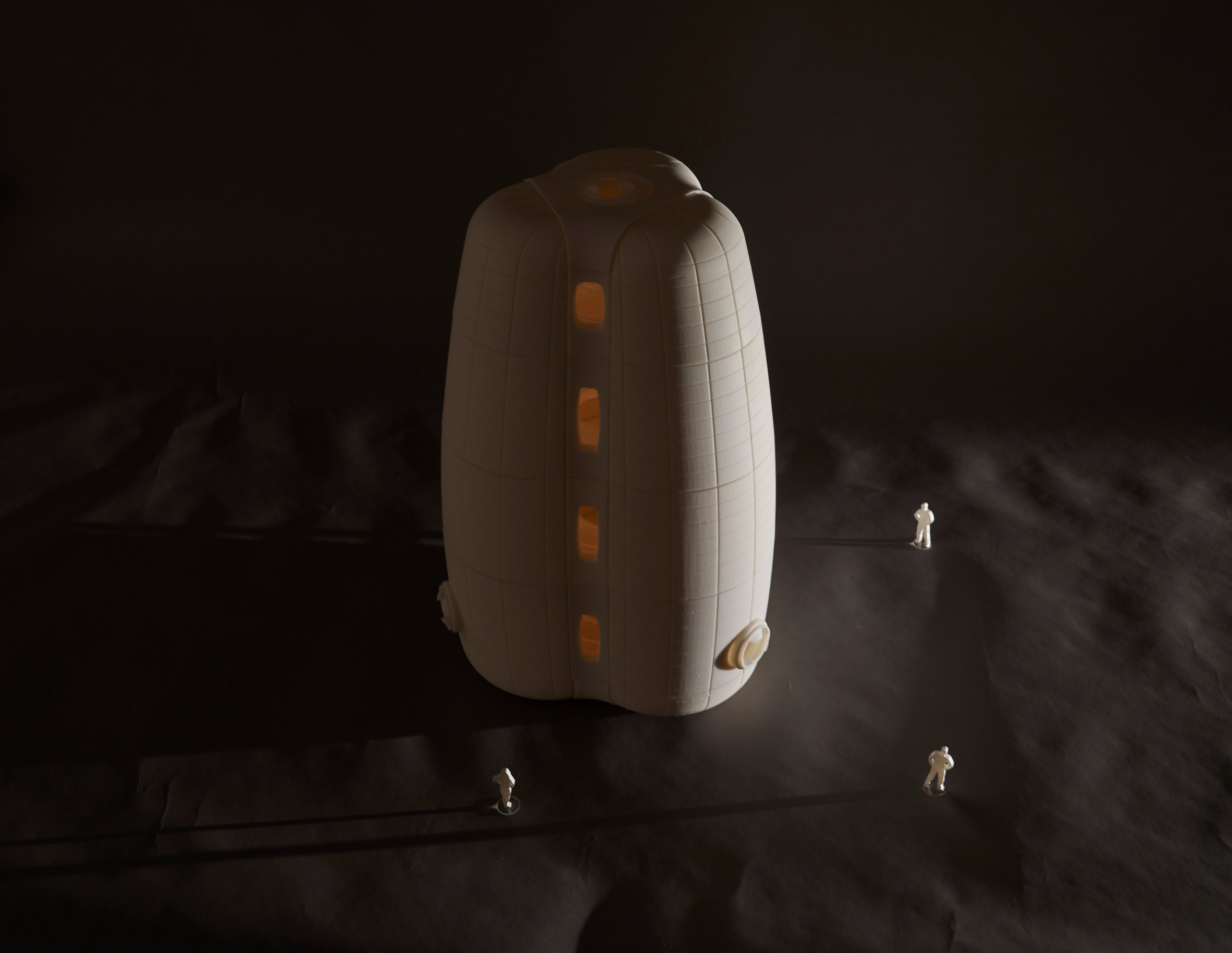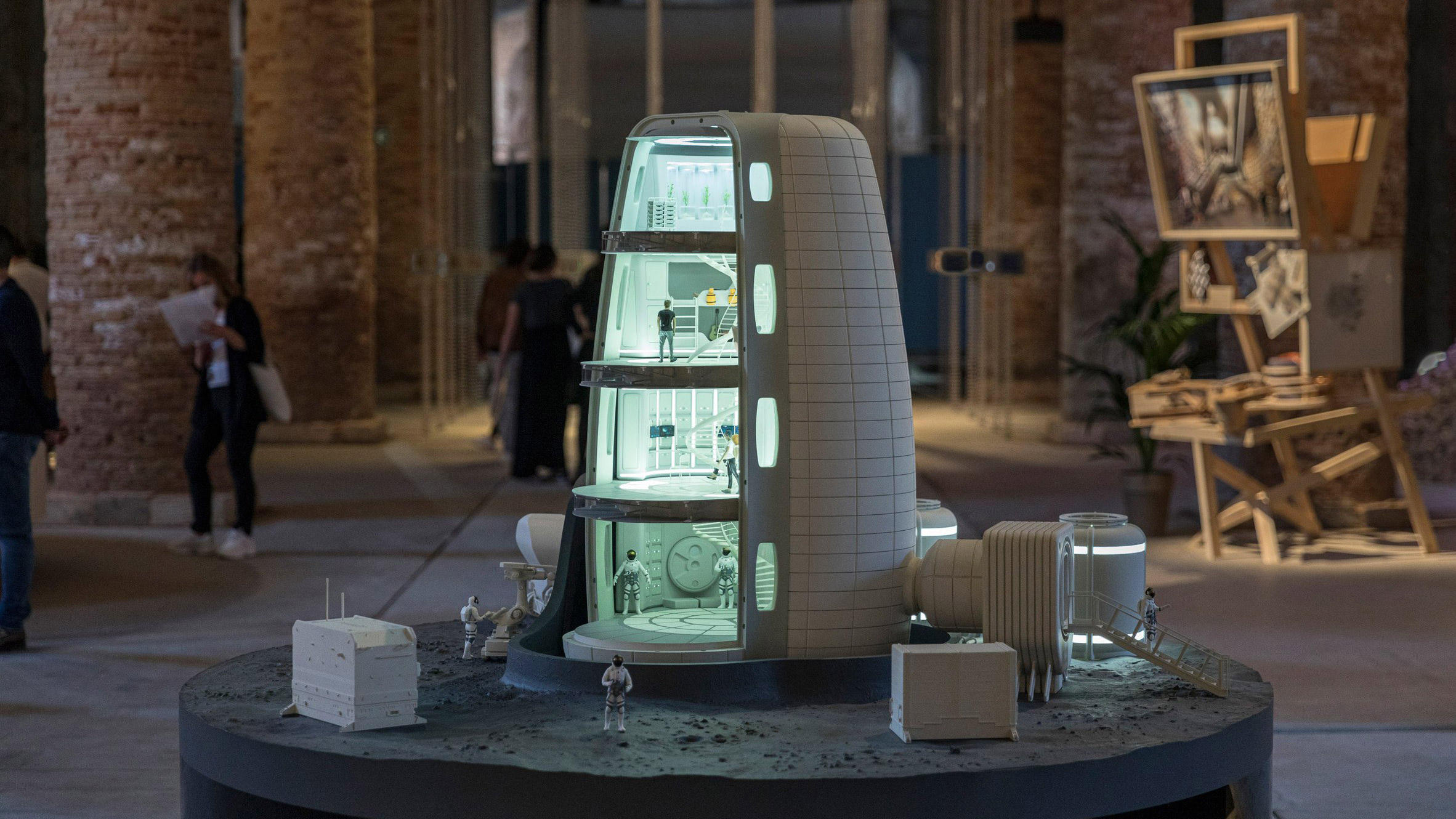
Moon Habitat Blueprint at Venice Biennale
Venice, Italy
22nd May – 21st November , 2021
Venice, Italy – The European Space Agency (ESA) and architectural firm Skidmore, Owings & Merrill (SOM) have unveiled a groundbreaking lunar habitat design at the 17th International Architecture Exhibition of the Venice Biennale. Themed “Life Beyond Earth,” the exhibit features a semi-inflatable habitat for the Moon’s South Pole, designed to support a four-person crew for up to 300 days.
This advanced structure combines rigid and inflatable elements, enhancing efficiency and safety in the lunar environment. The habitat is equipped with life-support systems that recycle air and water, generate oxygen from lunar soil, and advanced shielding to protect against cosmic radiation. Solar panels and batteries provide continuous power, ensuring sustainability and resilience in the harsh lunar conditions.
The exhibit includes detailed architectural models and an immersive film that simulates the journey to the Moon, providing a vivid visualization of future lunar living conditions. This presentation underscores the importance of interdisciplinary collaboration in space exploration, blending cutting-edge technology with innovative architectural solutions.
The Moon habitat blueprint represents a significant milestone in lunar exploration and serves as a prototype for future human settlements on Mars and beyond. Addressing critical challenges such as resource management and long-term sustainability, the ESA-SOM design offers a comprehensive solution for extraterrestrial habitation.
The Venice Biennale, renowned for showcasing avant-garde art and architecture, provides an ideal platform for this groundbreaking project. By engaging the public and the architectural community, the exhibit fosters a broader dialogue on humanity’s future in space. The ESA’s participation in the Venice Biennale marks a significant step in envisioning and realizing sustainable living environments beyond Earth. As space agencies worldwide prepare for the next era of space exploration, innovative designs like this lunar habitat are crucial in paving the way for human presence on other celestial bodies.
The exhibition, themed “Life Beyond Earth,” emphasizes humanity’s drive to explore and inhabit new frontiers. The Moon habitat design is not just a vision for the future but a concrete step towards making long-term space habitation a reality. The collaboration between ESA and SOM highlights the potential of interdisciplinary efforts in solving complex problems related to space exploration.
The Moon habitat design includes a variety of innovative features that make it suitable for long-term human habitation on the Moon. The combination of rigid and inflatable elements provides a robust yet flexible living environment. The habitat’s life-support systems are designed to ensure that astronauts have a reliable supply of air and water, essential for extended missions. The ability to generate oxygen from lunar soil represents a significant advancement in using local resources to support human life.
Radiation protection is another critical aspect of the habitat design. The Moon’s surface is exposed to high levels of cosmic radiation, which can pose severe health risks to astronauts. The ESA-SOM habitat incorporates advanced shielding materials and techniques to mitigate these risks, ensuring that the crew remains safe during their stay.
Energy sustainability is achieved through the use of solar panels and batteries, which provide a continuous power supply. This ensures that the habitat can operate independently, even during periods of darkness or reduced sunlight. The use of renewable energy sources also aligns with broader goals of sustainability and environmental stewardship in space exploration.
The Venice Biennale exhibit allows visitors to engage with these concepts firsthand, offering a glimpse into the future of human space habitation. The detailed models and immersive film provide a comprehensive overview of the habitat’s design and functionality, highlighting the intricate engineering and architectural solutions developed by ESA and SOM.
This exhibit is not only a showcase of technological and architectural innovation but also a call to action for continued investment and collaboration in space exploration. The ESA’s participation in the Venice Biennale demonstrates a commitment to pushing the boundaries of human knowledge and capability, inspiring future generations to pursue careers in science, technology, engineering, and mathematics (STEM).
As humanity looks towards the Moon, Mars, and beyond, projects like the ESA-SOM lunar habitat will play a crucial role in making these ambitions a reality. By addressing the challenges of living in space, these innovative designs pave the way for sustainable human presence on other celestial bodies, marking a new era in the history of exploration.

